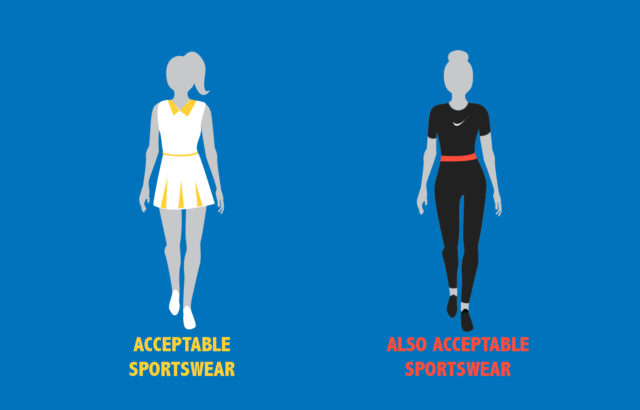Serena Williams, American tennis superstar, wore a catsuit to a tournament in the French Open in May. The catsuit was banned in August because, according to French Tennis Federation President Bernard Giudicelli, “You have to respect the game and the place.”
The full-body catsuit defies tennis attire norms but can hardly be argued to be disrespectful to the sport.
Williams has won a record 39 Grand Slam singles titles and four Olympic gold medals. She entered the professional realm when she was 14 and has played tennis since she was 3. It is fair to assume that Williams respects the sport.
Her catsuit — a sleek black bodysuit with a red waistband — was specifically designed for her by Nike to accommodate her health needs. Williams has a history blood clot-related health issues, which worsened during her pregnancy. After having an emergency C-section last September, Williams was left bedridden for six weeks following. Williams returned to the court after a 14-month break.
Williams wore her catsuit to all three of her rounds in the French Open in May. The full-length pants aided blood circulation. She dedicated the catsuit to new mothers, tweeting, “Catsuit anyone? For all the moms out there who had a tough recovery from pregnancy — here you go. If I can do it, so can you. Love you all!!”
Williams responded that she thinks the French Tennis Federation would not have an issue with her outfit if they knew it was designed to moderate a health concern.
Giudicelli said the French Open will be introducing a “new, more restrictive dress code” in the near future. The French Open considered adopting Wimbledon’s all-white dress code in 1990 but has yet to publish an official policy. Although most outfits for the 2019 tournament have already been made, the French Tennis Federation has requested to see the designs in advance.
According to its website, the French Tennis Federation exists “to promote, organize and develop tennis in France,” as well as “to reunite the affiliated clubs” and ensure France representation in major sports meetings.
By developing a dress code, the French Tennis Federation promotes itself as a bureaucratic, elitist sport. The all-white dress code in Wimbledon — the oldest and most prestigious tennis event — dates back to Victorian trends. Besides concealing sweat stains, white indicated wealth and privilege, because the working class could not wear the color without dirtying it, according to Allure. Such dress codes are reminiscent of antiquated restrictions.
In the 21st century, the highest hope is that inclusion in the sport is prioritized. An adoption by the French Open of a dress code that discriminates based on pure preference will reinforce the power of bureaucrats with erratic decision-making tendencies.
Williams wore a black tulle, single-sleeved tutu at the U.S. Open. While it showed far more skin and was a far less conventional style of sportswear, it did not receive any negative comments from the United States Tennis Association (USTA). The standard for “respectful” tennis-wear seems to be more about fitting conservative feminine roles, not standardized tennis regulations.



